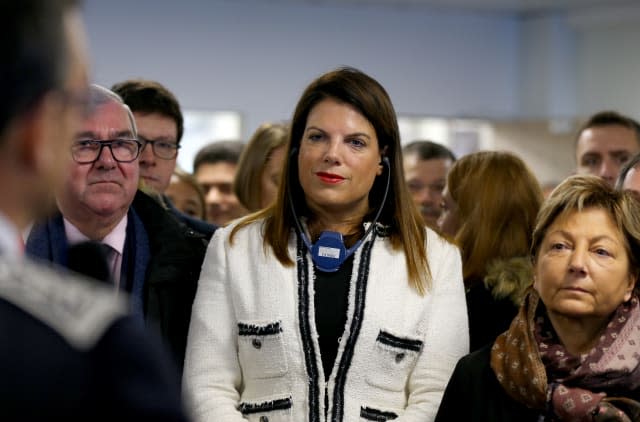Immigration Minister pledges to step up pressure to return migrants to France

Britain will step up pressure to return to France migrants who have crossed the English Channel, the Immigration Minister has pledged.
Caroline Nokes confirmed that a “small number” of people who made the illegal journey at the end of last year had been sent back, as she met French Interior Minister Christophe Castaner in Calais.
Ms Nokes refused to be drawn on how many people the Home Office is planning to return, but told the Press Association: “We’ve already returned a small number of migrants and we are going to continue working going forwards to make sure that pressure is stepped up.”
When asked if officials were quizzing migrants on whether they had relatives in the UK before they were sent back to France, she said the Government would not return people “on whom we haven’t done the appropriate checks”.
Ms Nokes made the comments as she met Mr Castaner at the official opening of the new UK-France Coordination and Information Centre.
The centre will help the two countries work together in the fight against smugglers and human traffickers.
Home Secretary @sajidjavid and French Interior Minister @CCastaner have agreed a new joint action plan to strengthen efforts against migrant activity in the English Channel.
Find out more: https://t.co/zg48TEbrR8pic.twitter.com/ol0YTGfdP8
— Home Office (@ukhomeoffice) January 24, 2019
On Thursday, Home Secretary Sajid Javid announced a joint action plan which will see more than £6 million invested in new security equipment as well as a mutual commitment to return migrants.
The extra funding will be used for equipment and measures to tackle illegal migration by small boats, such as CCTV, night goggles and number plate recognition capability.
Additional security cameras will be installed at French ports and in areas where migrants may attempt to board boats, which will be fed live to the UK-France Coordination and Information Centre.
There will be increased surveillance of the Channel by air and boat patrols, with shared intelligence between UK and French authorities.
Help Refugees estimates there are roughly 1,000 refugees living between Calais and Dunkirk, of whom 150 are unaccompanied minors.
Ms Nokes said she had been “struck” by French efforts to prevent people departing from beaches, though she added that she was “very conscious” of an increase in the numbers trying to cross the Channel in the last week.

“What matters most is that we prevent people from taking to the Channel, we avoid loss of life and that we co-operate to ensure people are kept safe and deterred from making these extremely dangerous crossings,” she said.
The minister agreed with Mr Javid’s assessment of the increased crossings as a “major incident”, but would not be drawn on how many migrants have attempted to cross the Channel by boat this year.
She said: “It’s absolutely right to describe this as a major incident when people were taking to the busiest shipping lane in the world, at an extremely cold and treacherous time of year, and we are determined to work together to prevent that.
“Of course, it’s right that we fund this appropriately … and what’s really clear is we will not be able to solve this on our own. We have to work with our friends and partners to make sure it is not just this immediate challenge which is tackled, but also the whole route of migration so we can deter it at source as well.”

Ms Nokes, who also met Calais Mayor Natacha Bouchard on the visit, thanked the French for their “co-operation, surveillance and work on the beaches” as well as their work in disrupting organised crime gangs.
“It is so much more successful to prevent crossings from even starting than to try to rescue people when they are on the busiest shipping lane, one of the most perilous shipping lanes in the world,” she told reporters.
The joint centre is manned by staff from French and British agencies including the Border Force, immigration enforcement, National Crime Agency and Kent Police.
Large screens showing live CCTV feeds of the road leading to Calais port, the Eurotunnel entrance and surrounding land flank one wall.
French officials told Ms Nokes that drones will be used to target specific issues and boats “we have recently identified as high-risk”.

The drones have thermal imaging with a range of 4.4 miles (7km), are high-speed and can identify vehicle registration plates at a distance of a quarter of a mile (400m).
Currently the drones are being used inshore with plans to roll them out to the coastline.


